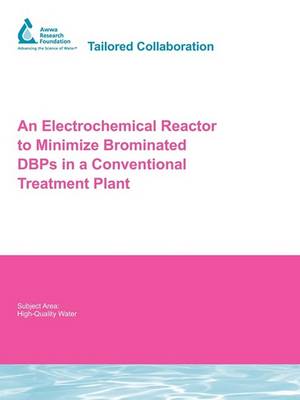The presence of bromide in drinking water typically leads to the formation of brominated DBPs upon chlorination. Bromide is not removed by conventional water treatment processes. Ion-exchange and high-pressure membrane filtration remove bromide but produce a concentrated brine waste stream. One emerging technology for bromide removal is electrolysis. Limited design data on bromide removal by electrolysis are available in the literature. However, design parameters, operational constraints, and costs need to be defined.
The objectives of the study were to (1) determine operational conditions under which electrolysis removes bromide and decreases the formation of halogenated disinfection by-products (DBPs); (2) investigate the effect of electrolysis on ozonation DBPs (bromate), bacterial regrowth, and taste andor; (3) evaluate the impact of electrolysis on conventional coagulation/flocculation/sedimentation and ozonation; (4) evaluate scalability and conceptual design issues; (5) determine preliminary capital and operational costs; and (6) determine future needs for demonstrating the technology. A four phased-approach was undertaken to conduct this project.
During the first phase, the electrolytic reactor was designed, constructed, and activated. During the second phase, the electrolytic reactor was operated under several conditions of hydraulic residence time, current level, and influent bromide level. Key analytical parameters were measured, including bromide, bromine, chlorine, and THM and HAA concentrations. During the third phase, conventional treatment consisting of coagulation/flocculation/sedimentation and/or ozonation was tested downstream of electrolysis to investigate whether electrolysis is feasible in a conventional treatment plant context. During the fourth phase, scale up, safety, and conceptual design issues were identified and preliminary costs estimated. A workshop was held towards the end of the study to identify future needs.
- ISBN10 1843392097
- ISBN13 9781843392095
- Publish Date 14 October 2008
- Publish Status Out of Print
- Out of Print 10 June 2016
- Publish Country GB
- Imprint IWA Publishing
- Format Paperback
- Pages 152
- Language English
